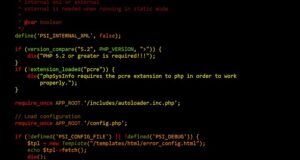Table of Contents
Have you ever wondered if React.js is worth learning? Is it really that useful to developers and companies? How different is it compared to other web technologies? These questions have become increasingly common as React.js has been gaining more and more momentum in the web development world over the past few years. React.js is one of the most popular open-source JavaScript libraries, with a large percentage of developers as well as big companies such as Airbnb, Apple, and Walmart all using it for their web applications.
The main problem with React.js is its complexity. Even for experienced developers, creating web applications that are well designed, scalable, and easy to maintain is difficult with React.js due to its reliance on components, its unidirectional data flow, and its state and props system. Additionally, many developers have difficulty getting started due to the steep learning curve. React.js is also hard to debug, and comes with some performance issues.
In this article, you will learn about the benefits of React.js, why it is so popular, and how to use it to create impressive web applications. We’ll discuss the complexity of React.js, how to keep it manageable, and recommended techniques and best practices for debugging and improving the performance of your React.js app. Finally, we’ll explore some of the common challenges developers face when working with React.js, and give tips on how to overcome them.Definitions of React.js: React.js is a JavaScript library created by Facebook and used for creating user interfaces. It is an open source library, which means it’s free to use and developers can customize it to their needs. React.js is different from other libraries as it is largely declarative, and is component-based. Components are reusable pieces of code which makes the development process easier and quicker.
Declarative Programming is the type of programming React.js uses, which is a set of instructions that declare the required endpoint, instead of being reactive in nature. It is designed to quickly and accurately update the data in the application and make it easier to use.
Components are snippets of code which developers can use to reduce the time it takes to build an application. This is because developers don’t have to write the same code to do certain tasks, instead, they can just reuse pre-built components. Components can also be shared between different projects, which makes the development cycle more efficient.
Open Source means it is free for anyone to use, and it can be customized to any need. This is beneficial for developers as it is an affordable way to develop applications, and they can use the most up-to-date technology without having to pay for expensive licenses.
To conclude, React.js is definitely worth it because of its declarative programming, custom components, and low cost. It allows developers to create applications more quickly and efficiently, and the open-source nature of React.js makes it a cost-effective alternative to other libraries.
Overview of React.js
What is React.js?
React.js is a JavaScript library created and maintained by Facebook. In recent years, it has gained significant traction in the software development industry for its unparalleled performance and ease of use. React aims to help developers create user interfaces that are both interactive and efficient.
React applications are typically composed of components, small snippets of code that serve a specific purpose. Components allow developers to build complex user interfaces by breaking them into smaller, reusable pieces. React is also particularly well-suited for building mobile applications, as it uses a virtual DOM to efficiently render changes to the view.
Advantages of React.js
React offers a number of advantages that make it desirable for web development. One of the primary advantages is its speed: because of its virtual DOM, React is able to render changes quickly and efficiently. Additionally, React is reliable: its code is flexible and can be re-used across different platforms. This reduces the amount of time and money needed for development.
Other advantages of React include its community support. React was created and is maintained by Facebook, so it has access to extensive resources. Its popularity also means that there is a large community of developers familiar with the language. This can be invaluable in terms of guidance and troubleshooting.
Features of React.js
React.js offers a number of features that make development easier. One of the most powerful features is its JSX syntax, which allows developers to write code in the same order in which it will be rendered on the page. Additionally, React makes use of functional components, small functions that can be re-used and shared throughout an application.
React is also highly efficient. It uses its virtual DOM to efficiently render changes to the page without needing to re-render the entire page. This makes React applications fast and responsive. Finally, React is designed to be easily integrated with a number of different frameworks and libraries, making it a versatile and powerful tool.
Pros & Cons of React.js
- Pros:
- Highly efficient
- Flexible code
- Great community support
- Consistent performance
- Versatile
- Cons:
- Steep learning curve for beginners
- Requires knowledge of JavaScript
- Changes to the core library can cause issues
Overall, React.js is a powerful and efficient library that can be used for a wide variety of applications. It is well-suited for developing complex user interfaces as well as mobile applications, and its consistent performance and flexible code make it an ideal tool for many developers. However, as with any technology, it is important to carefully weigh the pros and cons before committing to using it.
Challenges of Using React.js
React.js is a JavaScript library created by Facebook for user interface design. It has become one of the most popular frontend frameworks and continues to gain in popularity with developers. React.js offers a powerful and flexible way to develop web applications, as well as a vast ecosystem of components and tools for developers.
React.js Advantages
The primary advantages of React.js are its component-based architecture, the ability to develop applications using a high-level language, the availability of various plugins and components, and the ability to easily maintain complex user interfaces. Component-based architecture means that developers can create complete web applications out of small pieces of code. Using React.js offers a great deal of flexibility, as developers can create complex UIs with minimal effort and in a shorter time frame. Furthermore, the vast ecosystem of components available for React.js makes it easier for developers to build new features and extensions for their applications.
React.js Challenges
Though React.js offers great advantages, it also comes with its own set of challenges. React.js is not always suitable for all projects, particularly ones with lower complexity. Additionally, since React.js incorporates a lot of plugins and components, it can be difficult to keep track of and manage all the components. Additionally, though React.js is a high-level language, it can be difficult to learn especially for beginner developers. Lastly, due to the ever-evolving nature of React.js, developers must be constantly keeping up-to-date with changes in the framework in order to stay competitive.
Overall, React.js is a highly powerful and flexible tool for developers looking to create complex and dynamic user interfaces. Despite the challenges of learning and managing the components that come with React.js, most developers will find the advantages far outweigh the drawbacks. The availability of vast components and plugins, fast development times, and component-based architecture makes it a great choice for developers looking to create complex and user-friendly web applications.
Conclusion
.
When it comes to making a decision about whether React.js is worth learning and using, it can be difficult to decide. After all, there are plenty of options out there when it comes to development, so why should we bother learning a single platform? What advantages does it offer that make it worthwhile?
If you are wondering what the hype is about React.js, be sure to follow our blog for the latest updates. We’ll be exploring all the latest feature releases and updates to React.js to provide insight into the decision-making process. Stay tuned, as we’ll be providing the latest news and opinions about React.js.
FAQs:
Q: What are the advantages of React.js?
A: React.js offers several advantages over other development platforms. It is fast, reliable, simple to use, modular, and can easily be modified for various projects and platforms. Additionally, it is popular with developers, so it is easy to find help and resources online for any questions you may have.
Q: Is React.js better than other development tools?
A: Ultimately, the decision of which tool is right for you will come down to personal preference. Individual developers may have preferences for certain platforms, and flexibility for project demands. For this reason, React.js may be better in some instances and worse in others depending on the project specifics.
Q: Does React.js require a lot of effort to learn?
A: React.js is fairly easy to learn, but it does require an understanding of web development fundamentals. It is best suited for experienced developers, but beginners to web development can still understand it with proper guidance and resources.
Q: How much does React.js cost?
A: React.js is an open source platform, so it does not require any cost to use. You may have to pay for certain add-ons or extra libraries, but the source code itself is free to use.
Q: Is support available for React.js?
A: Yes, there are several online resources and libraries dedicated to supporting React.js, as well as numerous active discussion boards. Additionally, companies who specialize in React.js development offer personal support and advice.

